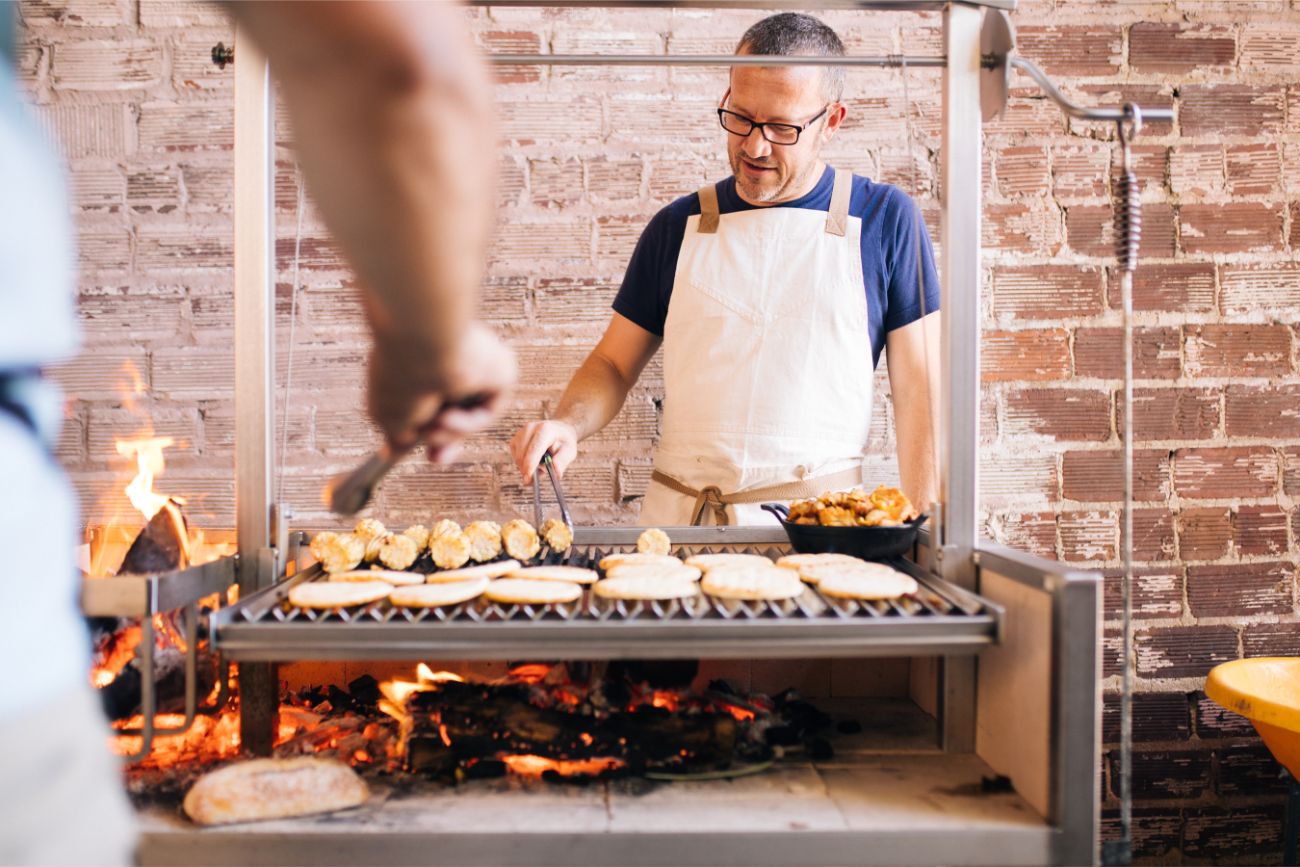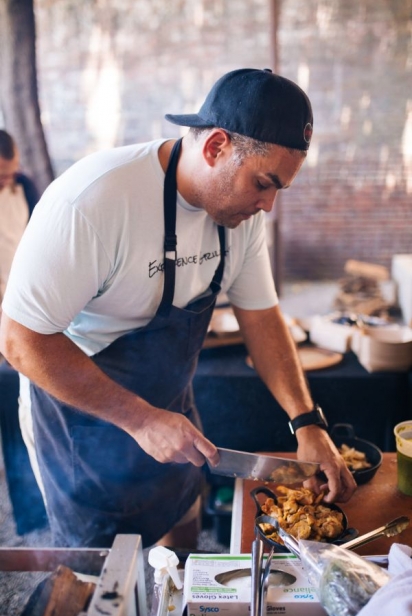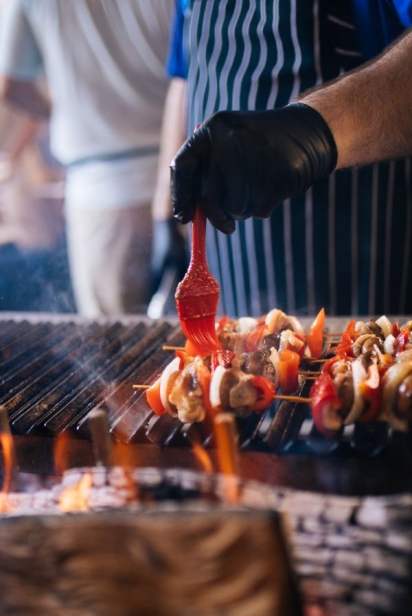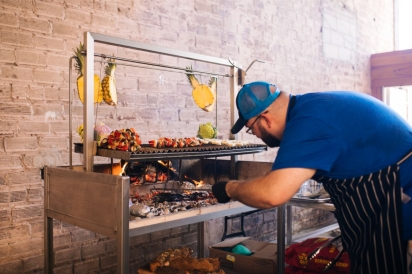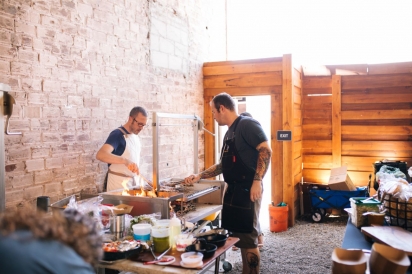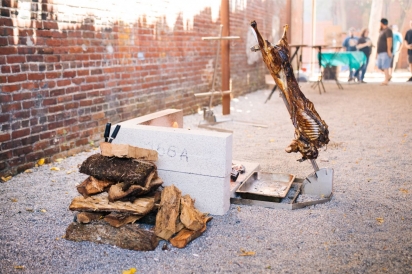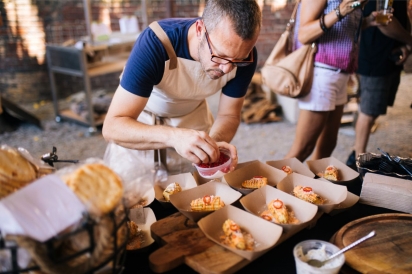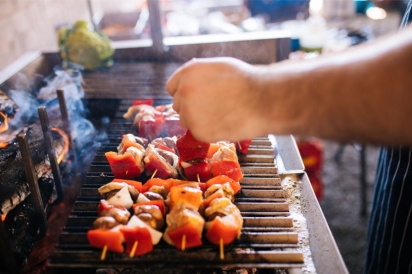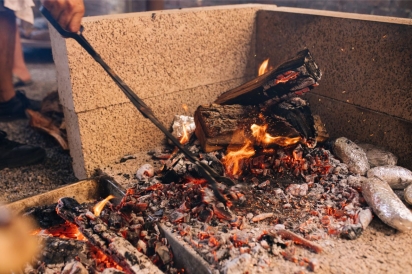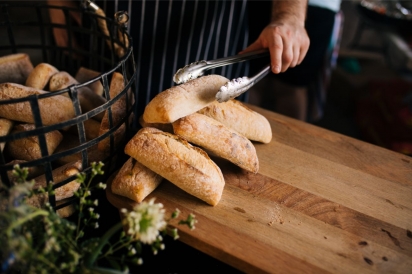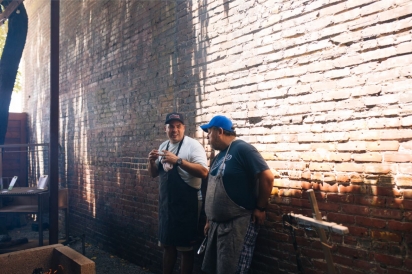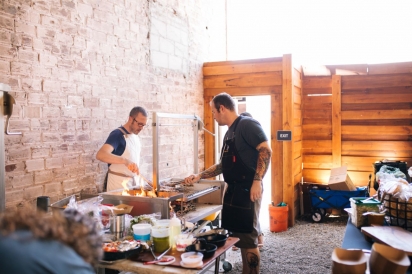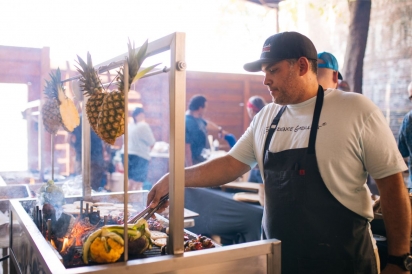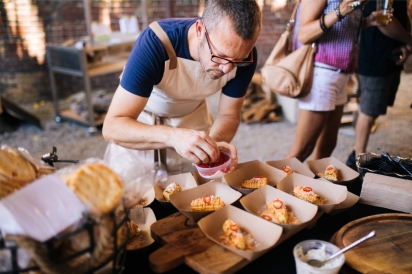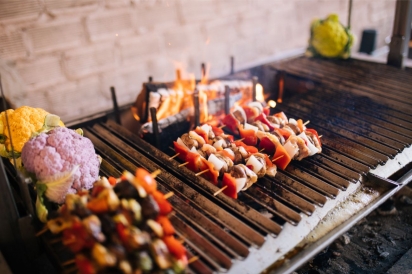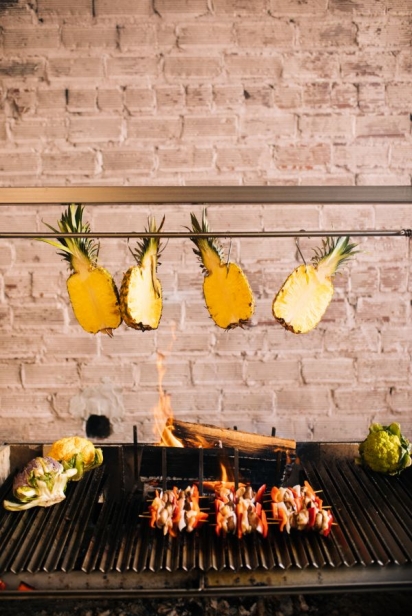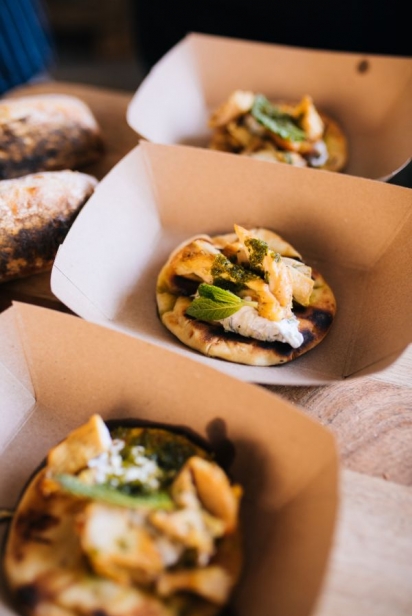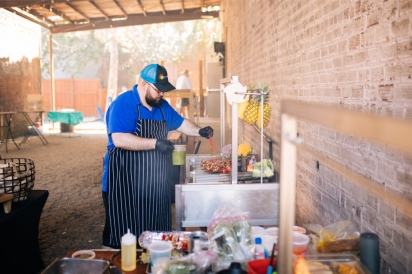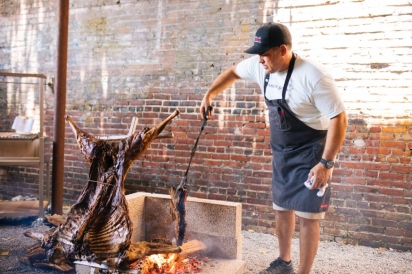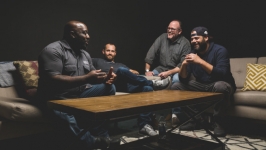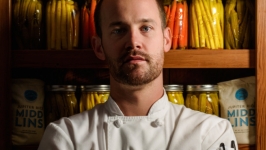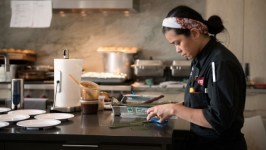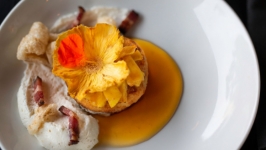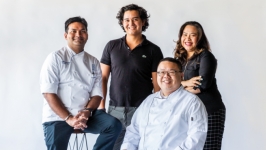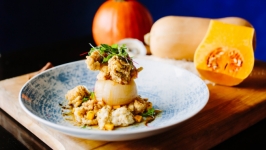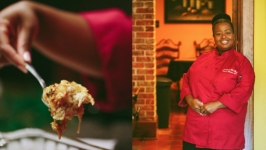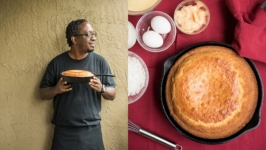Chefs Collaborate over Open Fire
The restaurant industry can be fiercely competitive, with narrow profit margins, constantly changing consumer demands and the lure of Instagram likes vying for attention. Yet the challenges of running a kitchen are shared by cooks across the industry, and often those who are in competition with one another also turn to each other for support and guidance. Who better to talk to than someone who understands the specific pressures of working in the food service industry?
Michael Lugo, Chef-Owner of Michael’s in St. Augustine, recognized the need for such an outlet, one where chefs could get together and talk shop, trade ideas and offer assistance. In 2018 he started the Chef ’s Collaborative to provide a networking opportunity for local chefs. Not surprisingly, cooking is an important component of these gatherings, usually over an Agentinian style wood burning BBQ grill called an asado. We joined Michael along with Joshua Agan, Chef-Owner of Routes: Culinary Travels, Sebastian Sikora, Chef-Owner of Dessert First Bistro and Jeff Warne, Chef-Owner of Let It Shine Gourmet to learn more about the group. In the process we also discovered a bit about using an asado and cooking over a wood burning grill.
How did the Chef’s Collaborative get started?
MICHAEL: After two storms in our area and the devastation that happened to my family in Puerto Rico, I sat back and reflected on all my charitable activities and who they impacted. I was on the board of the First Coast Technical Center and Flagler College Hospitality Board. I saw a huge void in the future, and knew that I had to put my energy into our local chef community. I also saw how the stress and lack of balance in many of the chefs’ lives made it a very vulnerable industry. I knew that if we could get chefs together, and get them to feel more involved in the message, that we could truly change things.
I met Nick Carrera at Urban Asado, his studio in St. Augustine, three years ago, and immediately knew we had an opportunity to do something together with his amazing grills. He called his shop the Collaborative District, and after a few months the vision came together. I began to hold wine tastings and special events at the location while planning on how to get other chefs involved. After Anthony Bourdain took his life I knew the time was right. I started a private social media page and invited every chef I knew. Since Nick makes Argentinian grills, we decided to use the tradition of the Sunday Asado as a bridge to our Collaborative.
What do you enjoy most about spending time with other chefs?
MICHAEL: We vent, share ideas, offer help, discuss industry trends, help with health code issues and many other things. I enjoy meeting chefs from all sides of the restaurant spectrum, being able to elevate the knowledge and techniques of other chefs, and getting more visibility for them in our community.
JEFF: Being part of the Chef’s Collaborative is amazing. It’s an honor to get to know all of these other talented chefs in the area. We share ideas and experiences, we are able to talk them out, get input and constructive criticism on our ideas. Each chef has their own style, their own experiences and most importantly their own perspective. It’s really cool learning little things from each person.I’ve made a lot of really good friends. We share different situations that we’ve been through and since everyone has a unique skill set, that makes the stories endless. In the end, we get to collaborate and create something new and exciting. There’s a lot of good food and it’s fun to be a part of it all.
SEBASTIAN: My favorite part of working with other chefs is first and foremost the camaraderie. We all collaborate so well in any situation. I get to meet new people who share a common interest and bond in situations that I don’t always cook in.
JOSHUA: Chefs tend to be a bit competitive, so when you can actually tame them to play nice, great things occur. The pressure is lifted. I think everyone gets a bit more relaxed and focuses on the festive aspect of the show. We taste each other’s food, and actually get to connect the old-fashioned way, rather than the obligatory digital thumbs up on social media. It’s nice to bounce ideas around with other chefs and exchange a kitchen tale or two.
What have you learned since you started cooking on a wood burning grill?
SEBASTIAN: Cooking on the asado is about understanding the fire and how it’s used as the heat source. It’s humbling because it’s not so much about your dish as it is about how to optimize the fire. But when your main focus is real wood and coals, it makes your instincts more primitive. I love it and when I cook on the asado, I want to educate people about how our ancestors cooked.
MICHAEL: Live fire cooking is really fun, but challenging at first. You get to truly feel the cooking process. You have to manage the temperature, but it’s forgiving also. It is a really organic way to impart flavor and texture to food.
JEFF: As the architect and builder of the Urban Asado Grills, let me just say, Nick is a rock star! He teaches each chef the importance of fire management. That’s the most valuable thing that I learned while working on these live fire grills. You have to continuously monitor the airflow and the amount of wood burning. Nick describes it as “Experience Grilling,” because it’s so much more than your typical grilling technique of just firing up your propane grill and cooking food. It’s an immersive experience from start to finish.
JOSHUA: I have always had a great fascination with fire. Growing up in an old 1800’s farm house in Vermont, heated only by a cast iron wood stove gave me good reason to respect fire. I’ve spent hours staring at campfires. I love the smell of my fingers and even my clothes the day after. Cooking with fire is very addictive, the call of the grill brings you back to nature. Cooking meat over an open fire is one of the most primeval culinary skills, and satisfies that savage instinct we often neglect.
What tips and tricks do you have for cooking on the asado?
MICHAEL: I suggest that a person first using the asado get acquainted with the rhythm of the fire. See how much time it takes for the embers to produce coals. Put your hand over the grill at different times while the fire is going, and notice the heat levels. Once you understand the rhythms of the fire, you can adapt many culinary techniques to the grills.
SEBASTIAN: By cooking on the wood grills, I realize that we (as a culture) have lost respect for what food means. Cooking this way, I feel more connected to the animals and I don’t want to be wasteful. Also, because of the design of the grill, even if an animal is lean, we can reintroduce fat into it. The V grates are a perfect basting platform.
JEFF: Don’t wear flip flops! You’re working with live fire and hot ambers don’t feel good on your toes! No seriously, fire and heat management is something I didn’t totally understand. You’re in total control of where and how hot you want the grill. The adjustable grilling level makes for a truly customizable environment. It’s really fun.
JOSHUA: One of the great bonuses of this style of grill is the v-shaped grates which channel the juices from the meat and capture them in the trough below. Meat drippings tend to be the most flavorful part of the whole grilling process, so allowing them to just drip onto the coals of your fire rather than basting them back on to your meat is a sin. They are also an amazing medium for poaching or braising another meat, seafood, potatoes, etc. I like to save mine for making bold flavored sauces and soups. Think chili or Brunswick stew made from your bbq drippings. This “bi-product” is hard to replicate and inspired my kitchen quotation “why throw away flavor?”
JEFF: We have such an awesome group of chefs and an awesome space at Urban Asado in St. Augustine to develop, test and perfect our ideas. Chef Michael and Nick have really done a great job of bringing chefs together with the community for this very unique experience. It’s an honor to be a part of it.
Interested in attending a Sunday Asado with local chefs? Get details here.


